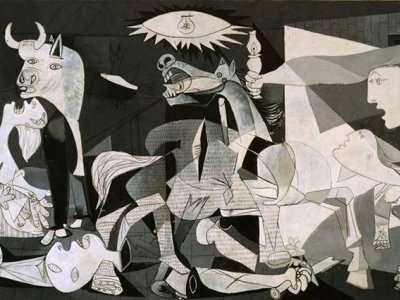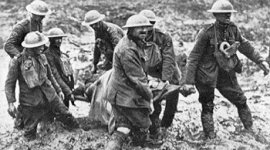
GUERNICA
One Basque town inaugurated an era in modern warfare which should guide our prayers more than it does.
Each journey we carried out as a family on our summer holiday in 2008 took us through the busy town of Guernica. We always encountered extensive traffic queues, affording us plenty of time to reflect on the Basque people’s spiritual home. Its unprepossessingly modern architecture bears implicit testimony to one of the twentieth centuries most infamous crimes: its total destruction on April 26, 1937 by the German Luftwaffe in support of the Nationalists during the Spanish Civil War. The numbers killed remain disputed (anywhere between 200 and 1000) but it inaugurated an era in warfare where civilian populations would be deliberately targeted and terrorised as a strategic military goal. Within a decade this would climax in two atomic bombs being dropped on civilian cities.
Pablo Picasso was incensed by the attack on Guernica and his subsequent eponymous painting about the atrocity has become an anti-war icon into which all kinds of meaning can be poured.
To mark the opening of a new wing of the Whitechapel Gallery in East London a tapestry of Picasso’s Guernica, which hung outside the Security Council chamber at the United Nations, has been put on display by the Polish born artist Goshka Macuga. Many will find her identification of modern American power with Franco’s Spanish fascism too crude and simplistic, but the covering up of the tapestry at the United Nations so that it would not form a backdrop to a critical pre-Iraq invasion press conference by Colin Powell in February 2003 was for Macuga too calculated a decision not to explore artistically.
If you are searching for a novel to read this summer, you might want to try the recently published ‘Guernica’ (Picador, 2009) by Dave Boling, which gives human and familial texture to the bombing and insight into a civil war about which most British people seem to know very little. Boling’s novel has been widely acclaimed and already compared to ‘Captain Corelli’s Mandolin’ and ‘The English Patient’.
The dismembered and vertiginous images of Picasso’s masterpiece and the sparing prose of Boling’s story furnish us with one of those origins narratives which have become artistically fashionable. They compel us to confront a terrible truth: a hundred years ago civilians formed only 5% of war’s victims while today they constitute 90%. A high number of these victims are children. It is argued that the use of advanced weaponry may be tilting the statistics back in favour of armed combatants, but the bulk of war today is not fought with such sophistication. The way we intercede as Christians over modern warfare should pleadingly call to mind the overwhelming suffering of innocent people, many of whom, by dint of age, cannot make sense of what is happening. Karl Barth said that people should pray with the Bible in one hand and the newspaper in the other. You might this summer prefer to pray standing in front of a tapestry or with a novel on your lap. I know I have.
POPULAR ARTICLES

Obama's Covert Wars
The use of drones is going to change warfare out of all recognition in the next decades.

Through A Glass Starkly
Images of traumatic incidents caught on mobile phone can be put to remarkable effect.

What Are British Values?
Is there a British identity and if so, what has shaped the values and institutions that form it?


